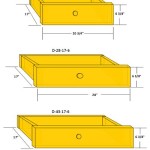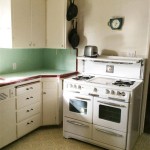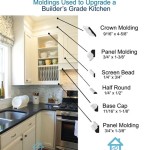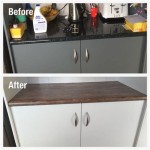Essential Aspects of Choosing the Best Paint for Old Kitchen Cabinets
Revamping old kitchen cabinets with a fresh coat of paint is a simple yet effective way to transform the look of your kitchen without breaking the bank. However, choosing the right paint for the job is crucial to ensure a durable and visually appealing finish. Here are some essential aspects to consider when selecting the best paint for your old kitchen cabinets:
1. Surface Preparation
Proper surface preparation is key to a successful paint job. Thoroughly clean the cabinets to remove dirt, grease, and other contaminants. Sand any rough surfaces or imperfections with fine-grit sandpaper to smooth them out. For cabinets with existing paint, lightly sand the surface to create a better bonding surface for the new paint.
2. Choose the Right Paint Type
The type of paint you choose will significantly impact the durability and finish of your cabinets. For kitchen cabinets, enamel or latex paint is generally recommended. Enamel paint provides a hard, glossy finish that is resistant to wear and tear, making it ideal for high-traffic areas. Latex paint offers a more matte finish and is easier to apply, making it a good choice for beginners or for a more subtle look.
3. Consider Color and Finish
The color and finish of your paint can dramatically alter the overall appearance of your kitchen. If you want to achieve a classic look, choose neutral colors such as white, cream, or beige. For a more modern aesthetic, opt for bolder colors or metallic finishes. Consider the existing décor and overall style of your kitchen when making your selection.
4. Check Paint Adhesion
Before applying the paint, test a small area to ensure it adheres properly to the cabinet surface. If the paint peels or cracks, you may need to apply a primer first to enhance adhesion. This step is particularly important for cabinets with oily or glossy finishes.
5. Use a High-Quality Brush or Roller
Investing in high-quality painting tools will significantly improve the final result. Choose a brush or roller with soft, synthetic bristles that will minimize brushstrokes and provide a smooth, even finish. For large surfaces, a roller is more efficient, while a brush is better for intricate details.
6. Apply Multiple Thin Coats
Instead of applying one thick coat, apply several thin coats of paint. This technique allows each layer to dry properly, preventing the paint from running or sagging. Sand lightly between coats to create a smooth surface for the next application.
7. Allow Ample Drying Time
After applying the paint, allow ample time for it to dry completely before using the cabinets. Follow the manufacturer's instructions for drying time, which can vary depending on the paint type and environmental conditions. This step is crucial to ensure a durable and long-lasting finish.

Avoid These Mistakes How To Paint Cabinets That Are Already Painted Grace In My Space

How To Paint Kitchen Cabinets

How To Prep And Paint Kitchen Cabinets Lowe S

The Best Way To Paint Kitchen Cabinets No Sanding Palette Muse

How To Paint Kitchen Cabinets In 7 Simple Steps

Ultimate Guide To Painting Cabinets Bbfrosch

Painted Kitchen Cabinets One Year Later The Palette Muse

How To Paint Kitchen Cabinets In 7 Simple Steps
Is Cabinet Painting Right For Your Kitchen Update Tune Up

How To Paint Kitchen Cabinets Forbes Home
Related Posts








